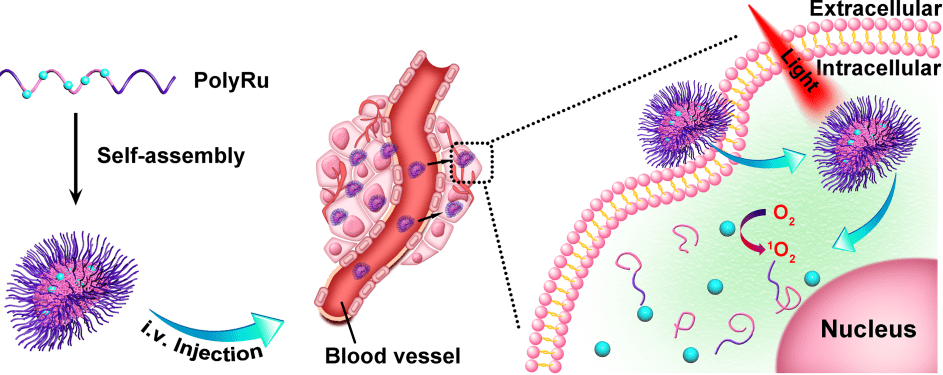Recently, the motivation to produce new metallodrugs has been stimulated by the success of several platinum based anticancer drugs. Moreover, ruthenium (Ru) complexes have potential as anticancer metallodrugs with some such complexes entering clinical trials; however, they are limited by a lack of selectivity towards tumor or healthy cells. This is a major challenge among such anticancer metallodrugs.
Recently, an international research team has successfully synthesized a novel photoactivated polymetallodrug. This polymetallodrug is a novel Ru-containing block copolymer (PolyRu) with two polyethylene glycol (PEG) blocks either side of the Ru-containing block (see structure below).

PolyRu nanoparticles can be uptaken by cancer cells, and red light irradiation of the particles releases the anticancer Ru complexes and generates cytotoxic singlet oxygen. This light activation leads to cell death. In vivo experiments were also performed on mice and demonstrated efficient accumulation of PolyRu at tumor sites.
This research provides a strategy for the design of photoactivated polymetallodrugs that show promise for anticancer treatments.

















